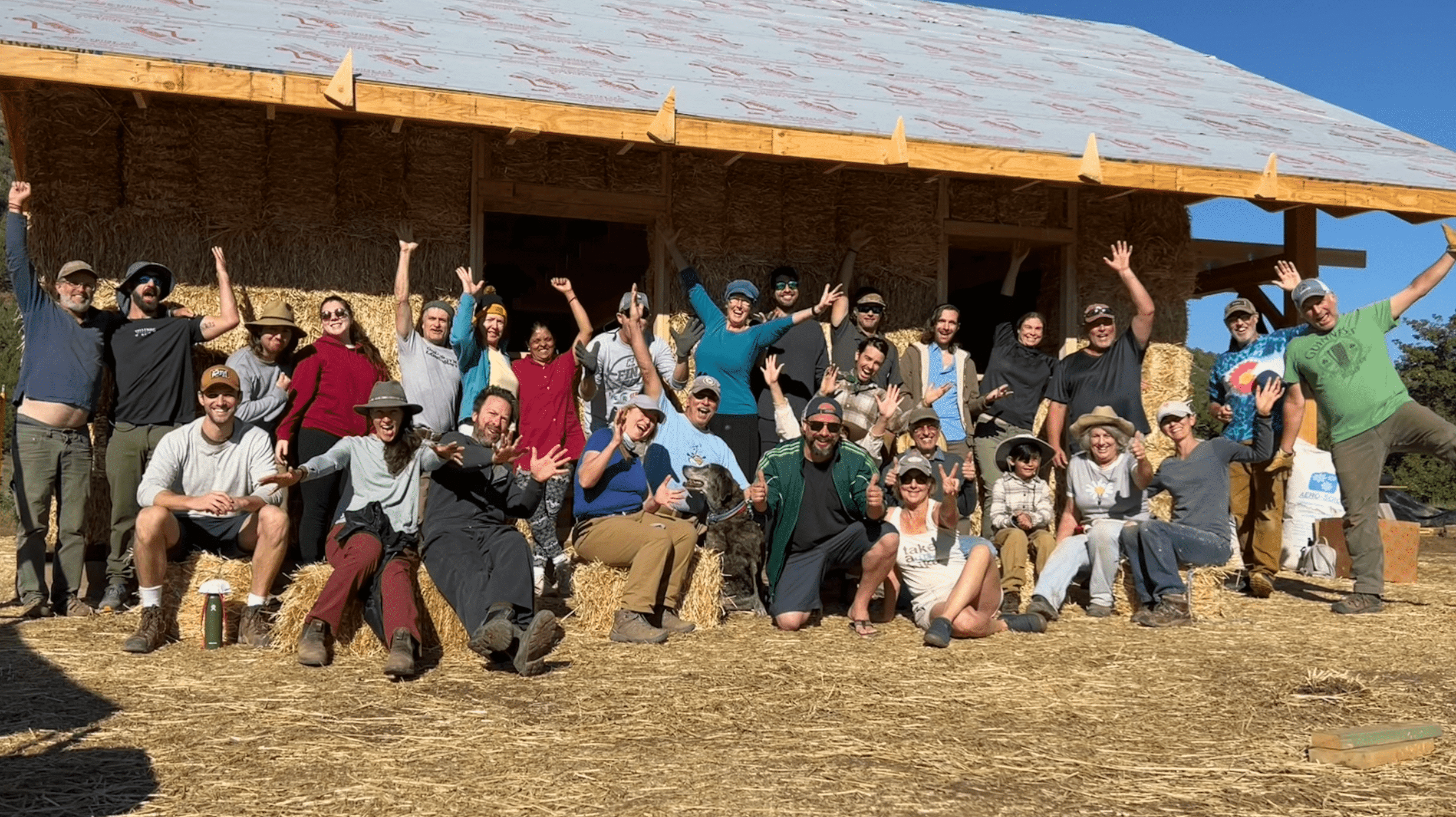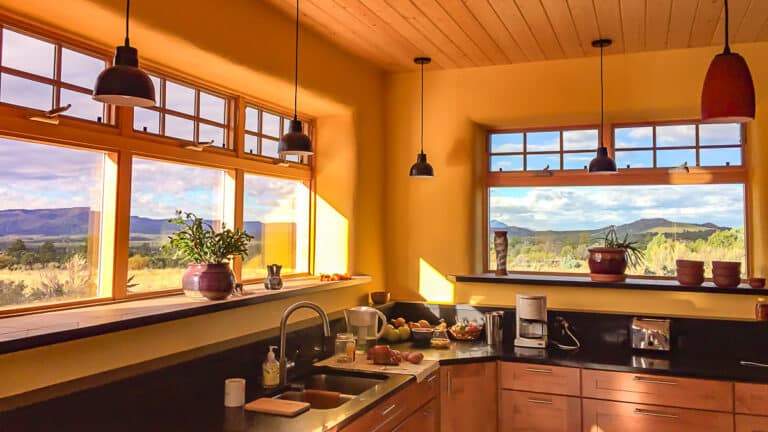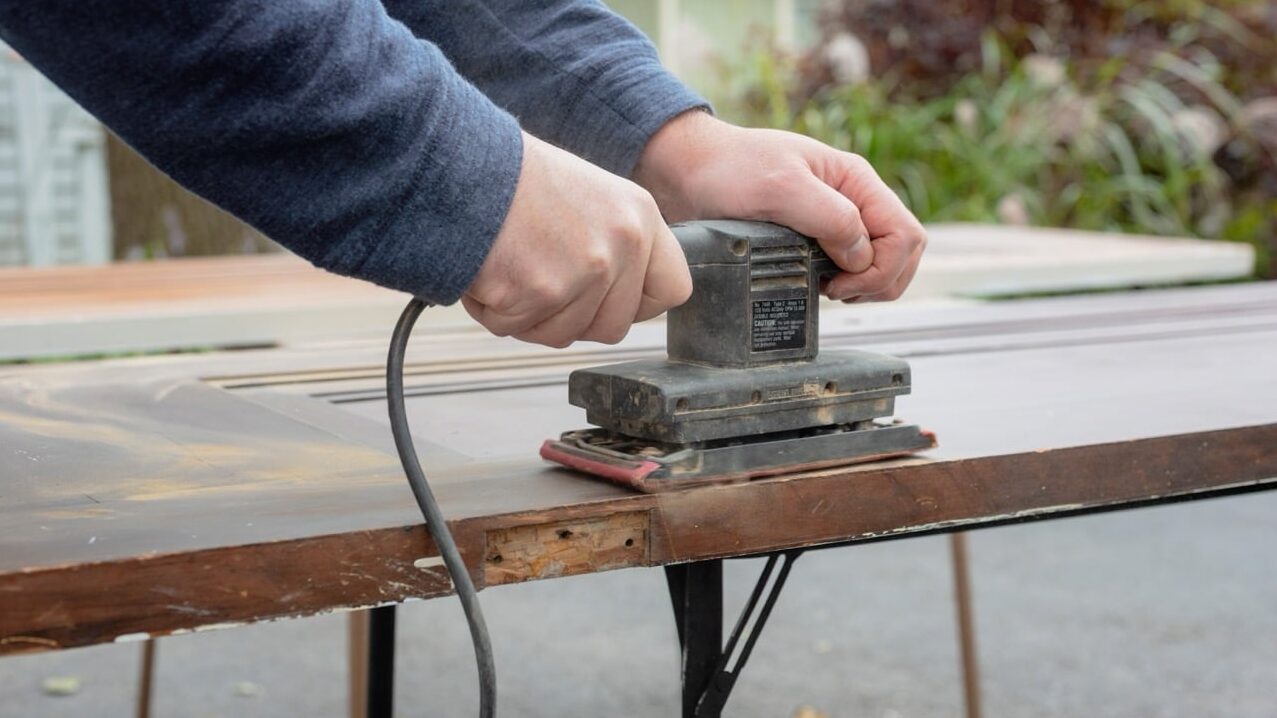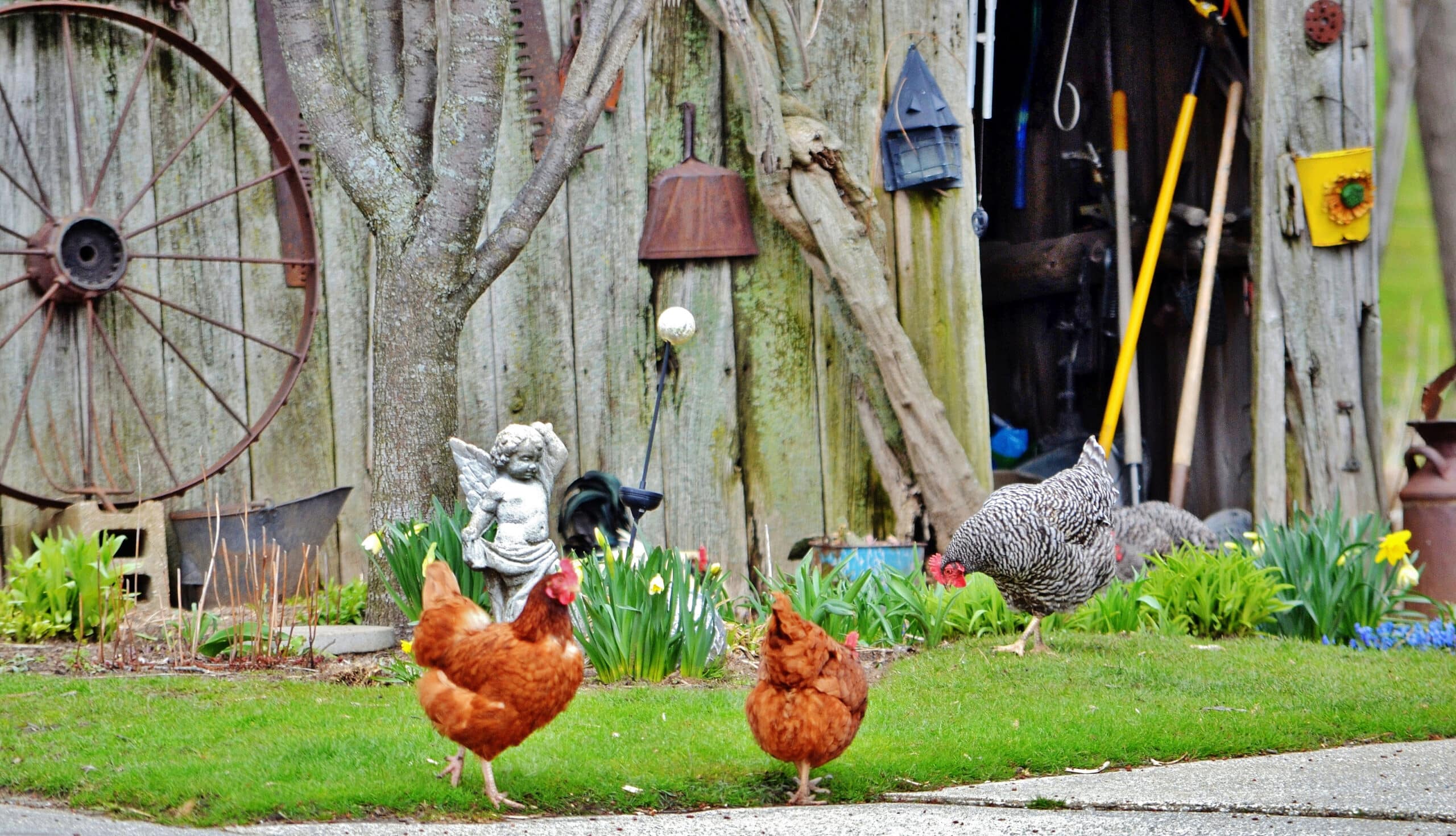
Not all people who build straw bale homes build them off the grid, and not all people living off the grid do so in straw bale housing. But the two are as powerful a combo as peanut butter and jelly for many reasons! We’ll share five of our favorites, but first things first. Just what do we mean by ‘off-grid living’?
Living off-grid refers to a lifestyle where individuals or families rely on self-generated resources instead of public utilities. This includes generating their own electricity, sourcing water from wells or rainwater collection systems, growing their own food, and managing waste through composting or other sustainable methods. This lifestyle allows individuals to become more self-sufficient, reduces their environmental impact, and increases their resilience in the face of power outages or other disruptions.
Off-grid living can take many forms, from remote cabins in the wilderness to suburban homes equipped with solar panels and rainwater harvesting systems. Regardless of the location or scale, the principles remain the same: reducing dependence on external resources and living in greater harmony with the natural environment.
Obviously, these lifestyle choices would make using energy resources efficiently a top priority, which is why it is our favorite advantage of straw bale housing for off-grid living and we aren’t alone in our appreciation…
"Straw bale home construction and off-grid living go together like peanut butter and jelly. The incredible insulating values that straw bale construction brings to the table will allow you to heat and cool your cozy new home using small off-grid systems, consuming only a fraction of the energy you’re producing."
Mark Bonnalie, Founder of Moder Rural Civilian
Mark and his wife Heather joined us recently at a straw bale workshop and share their evolving Northern Idaho off-grid homesteading projects through social media. See their Instagram series on their 2023 stawbale.com workshop experience and follow their ongoing projects here. “We laughed, we shivered, it rained and we shined. The 2023 McCall, Idaho straw bale workshop was a journey all of its own.. It’s the pieces of that journey that become the blueprint to your dream home.” – Mark & Heather
Energy Efficiency and Straw Bale Housing
One of the key advantages of straw bale housing (and perhaps most important for off-grid living!) is its exceptional energy efficiency. It is vital that all of your systems be as energy-efficient as possible. This is true for any home, in our opinion, but especially so when one is personally responsible for creating the energy used to power their home (solar, hydro, wind, etc.) and the energy used to heat and cool it (geothermal, passive solar design, etc.)
In straw bale homes, the exterior envelope of thick insulating walls sealed with plaster minimizes convection losses. In summer, the dense walls keep the interior cool by blocking out the sun’s heat, while in winter, they retain heat, creating a cozy and comfortable living environment.
Compared to many conventional construction methods, straw bale homes can achieve a significantly higher level of insulation and often have less thermal bridging, further resulting in lower energy consumption and reduced utility bills. (It is worth noting that there is a lot of nuance around R-values and straw bale construction, but a good number to go by is R-30; more coming in future articles!)

DIY as an Owner-Builder
Many who live off-grid have built their own homes or plan to in the future. With proper education, a straw bale home can be built by an owner-builder with success.
As with any construction, the more accurate information and resources you are armed with, the more successful you will be. There is a ton of free information on our blog about how to build your own straw bale house, and we offer hands-on workshops each year.

Health Benefits of Using Natural Materials
Many off grid enthusiasts choose to move away from the grid in order to live a more simple and natural life. Living in a strawbale home can have positive impacts on both physical and mental health.
The natural insulation provided by straw bale walls creates a more stable and comfortable indoor environment. The superior soundproofing properties of straw bale construction also contribute to a quieter living space, minimizing noise pollution and promoting better sleep and relaxation. Additionally, the use of natural materials like straw contributes to a healthier indoor air environment, free from harmful chemicals often found in traditional building materials.
In addition to the physical benefits, the use of natural materials and the organic aesthetic of straw bale construction creates a sense of harmony with the surrounding environment, fostering a calm and peaceful atmosphere. This connection to nature has been shown to have positive effects on mental well-being, reducing stress levels and promoting a sense of contentment and happiness.

Build For Extreme Weather
Bale structures have been shown to stop projectiles in tornado simulation testing due to their thick walls, plaster coats, and mesh reinforcement. They have also proved to be extremely strong in earthquake tests and fire resistance. For example, a test done at the University of Nevada-Reno showed that a bale assembly was able to resist an earthquake 200% of the 1994 Northridge, CA quake. That’s a HUGE quake. Learn more about the earthquake testing of straw bale construction methods at the University of Nevada-Reno here.
In ASTM testing, bale wall assemblies performed three times as well as conventional wall systems for fire resistance, again due to the density of the wall and the thickness of the plaster coats. Read the ASTM 1-hour testing results here.

Cost-Effectiveness
Straw Bale homes can be built inexpensively; however, what that actual cost will be depends on a variety of factors, including the complexity of design, size, land costs, chosen finishes, and the amount of sweat equity labor provided.
People have finished their homes for less by salvaging their windows, doors, and other building materials. They’ve built smart designs to take full advantage of long-term cost savings through the extended lifespan and energy efficiencies of building a custom bale home. With your own labor, smart material choices, and some salvaging along the way, you can really build a healthy, high-performance straw bale house that outperforms a conventional build at a similar cost per square foot.
This accessibility and affordability of straw bales make straw bale housing an attractive option for those on a tight budget or seeking a more sustainable and economical approach to homeownership.
One of the ways folks save the most is by putting their own labor into the build – That approach of doing and learning how to do things for yourself is embedded in the off-grid mindset.
Straw bale construction requires minimal specialized equipment or skills, making it accessible to a wider range of individuals. And, well-built straw bale homes are known for their durability, requiring less maintenance and repair over time. Learn more about life cycle cost and value comparisons in Catherine Wanek’s book, The New Straw Bale Home (page 7 has a great chart comparing four homes in Fresno, California – conventional, strawbale, strawbale with solar and owner-built strawbale.)(paid link)

How are you already living an off-grid lifestyle?
Drop us a note in the comments and help inspire others to take a step forward on their dreams today. No step is too small! 🙂




6 Responses
I’ve been living off-grid (solar w/gen backup, and rainwater for all my water) for 20 years, but I started the resource-conscious habits living in a condo in Washington DC. I would frequently turn off my electricity at the breaker panel, and developed habits to keep it off. (So much so that that electric company thought I had a faulty meter!) Off-grid living is a mindset more than anything else.
Thank you, Lawren, for sharing your experience and tip with all of us! I love that you brought the concepts into your lifestyle and created a mindset to match your goals.
Are there climates where strawbale construction would not be advised?
Thanks for your question, Jim. Deciding on using straw bale construction in a particular climate involves a few key considerations. Let’s break them down.
Firstly, check if you can easily get straw bales in your area. Ensure they’re harvested and stored in a dry place, as bales with over 20% moisture can lead to mold issues.
Next, a straw bale wall system needs to dry out from direct moisture and humidity. If the climate lacks a drying season, there’s a higher risk of moisture buildup, inviting mold growth.
Explore alternative wall systems like Hempcrete, Cob, or Rammed Earth that might suit the climate better.
Researching and addressing these questions will help you determine if straw bale construction fits the climate. Check out our blog post on Tropical Climates and Straw Bale Construction and Straw Bale Construction in Thailand for more insights. Also, consider signing up for our FREE 16-Day Straw Bale E-Course, especially Day 11, dedicated to High Rain Environments. It’s a valuable resource to tackle this specific concern.
I would love to be able to go off grid and resource everything I need to live. My husband I am positive would have a fit about it. I’m working on starting a small farmstead.
Hi Amy! Congratulations on taking steps with your small farmstead!